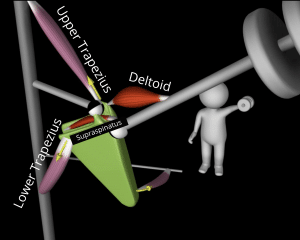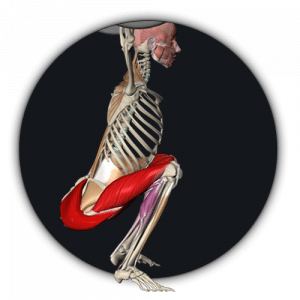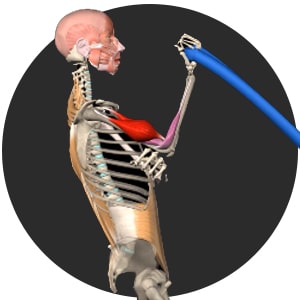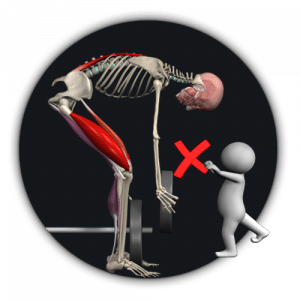Scapular Force Couple
The muscle collaboration in the shoulder
The muscles in our body work together in synergy.
Sometimes they serve as antagonists, in other movements, they can serve as synergists or stabilizers. Some act concentrically, others eccentrically or statically.
Each has its own role in the greater picture, and no joint movement can occur without each muscle doing its part and all of them working together.
This post will go through the muscle group that creates shoulder abduction and scapular upward rotation called the “scapular force couple”.
What is a force couple?
Force Couple is a biomechanical term describing two or more equal forces that are placed in opposite directions and act simultaneously around an axis, which creates a rotation. In this case, muscles moving around a joint.
How exactly does it work in the scapula?
Let’s talk some anatomy first.
The Scapula hangs from the Clavicle and is connected by the shoulder joint to the Humerus.
There are many muscles involved in shoulder and scapular movement, but today we’ll focus on three specific muscles that are responsible for shoulder abduction.
- Deltoid and Supraspinatus: When these muscles contract, they adduct the arm. The Supraspinatus is dominant mainly in the first part of the movement, and the Deltoid is more dominant in the second part of the movement.
- Upper and Lower Trapezius with Serratus Anterior: After a 120-degree angle in the shoulder, these muscles rotate the scapula upward, a movement allowing the arm to go up beyond this angle.

Now, to back to shoulder abduction.
Shoulder abduction occurs in the frontal plane and is usually called “lateral raises” when performed as an exercise.
It’s important to know that some trainees may be prone to shoulder impingement when performing lateral raises.
The shoulder impingement syndrome is a common shoulder issue that we often see in trainees that lift weight frequently and is usually manifested as shoulder pain when lifting above shoulder height.
There’s a way to make it better (hint: external rotation), and if you want to know more about it, we have an article specifically about that pain when lifting overhead.
Our body is an outstanding, extraordinary machine.
The more you know about it, the greater your connection and understanding, and so your ability to train smart and efficient.
For more videos, Log into the Strength Training app. Watch more than 1000+ exercises with full anatomical analysis for each, FREE access to a variety of exercises!
Target Muscles
➔ Deltoid
➔ Supraspinatus
➔ Upper Trapezius
➔ Lower Trapezius
➔ Serratus Anterior
Synergists
Stabilizers
ACHIEVE MORE, PUSH YOURSELF FORWARD, BECOME A REAL EXPERT.
Check out our Strength Training app to increase your knowledge, made especially for fitness professionals!



